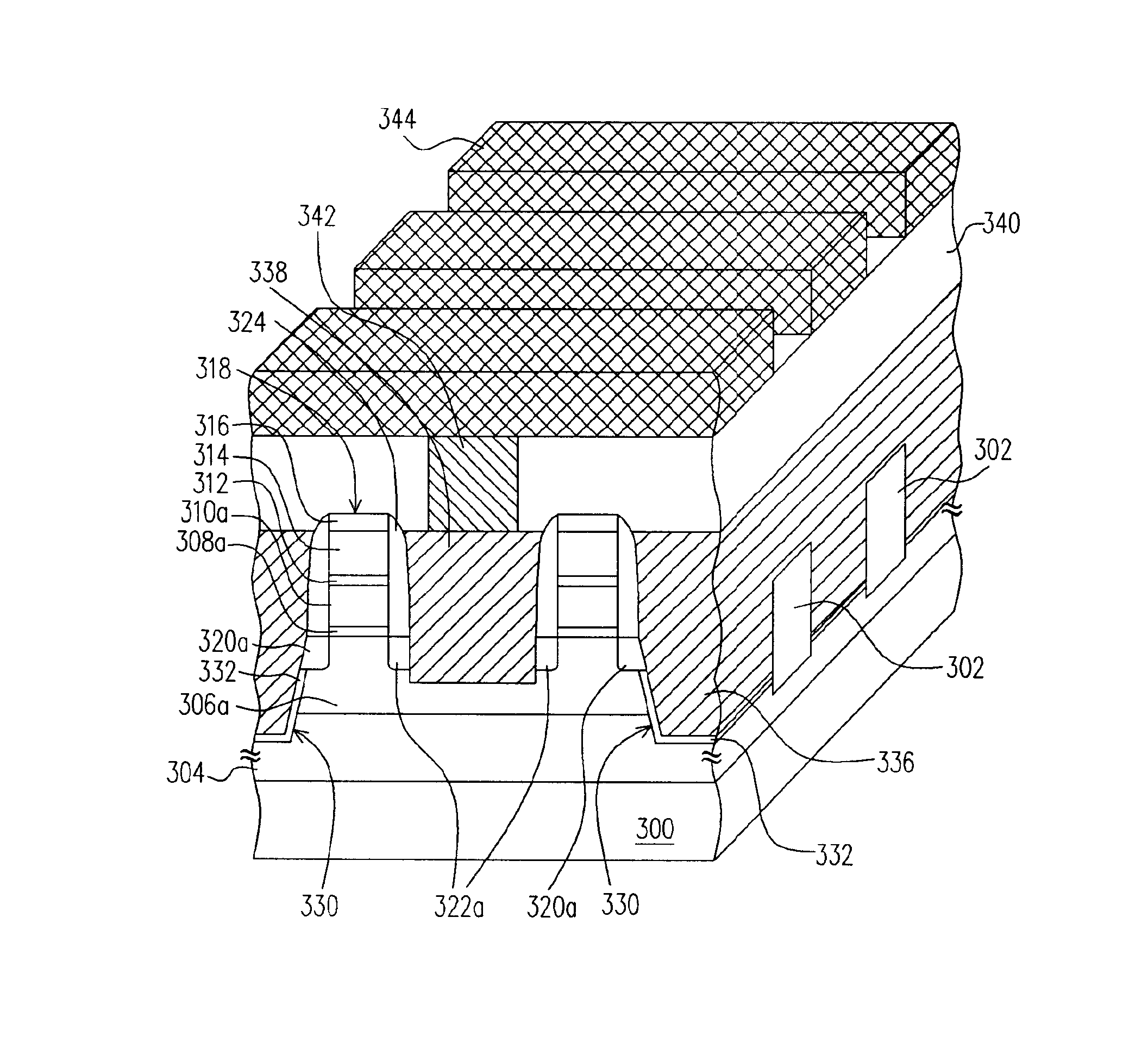Fabrication method of a flash memory device
- Summary
- Abstract
- Description
- Claims
- Application Information
AI Technical Summary
Benefits of technology
Problems solved by technology
Method used
Image
Examples
Embodiment Construction
FIG. 2 is a cross-sectional view of a structure of a flash memory device according to an embodiment of the present invention. A BiNOR type of array flash memory device is used as an example to illustrate the features of the present invention.
Referring to FIG. 2, the flash memory device of the present invention is formed with a P-type substrate 200, a deep N-type well region 202, a P-type well region 204, a stacked gate structure 206, a source region 208, a doped region 209, a drain region 210, a spacer 212a, a spacer 212b, a contact window 214, a contact window 216, an interlayer dielectric layer 218, a plug 220 and a conductive line 222. The stacked gated structure 206 is formed with a tunnel oxide layer 224, a floating gate 226, a gate dielectric layer 228, a control gate 230 and a gate cap layer 232.
The P-type substrate 200 comprises a trench 234. The deep N-type well region 202 is located in the P-type substrate. The spacer 212a and the spacer 212b are disposed on the sidewall o...
PUM
 Login to View More
Login to View More Abstract
Description
Claims
Application Information
 Login to View More
Login to View More - R&D
- Intellectual Property
- Life Sciences
- Materials
- Tech Scout
- Unparalleled Data Quality
- Higher Quality Content
- 60% Fewer Hallucinations
Browse by: Latest US Patents, China's latest patents, Technical Efficacy Thesaurus, Application Domain, Technology Topic, Popular Technical Reports.
© 2025 PatSnap. All rights reserved.Legal|Privacy policy|Modern Slavery Act Transparency Statement|Sitemap|About US| Contact US: help@patsnap.com



